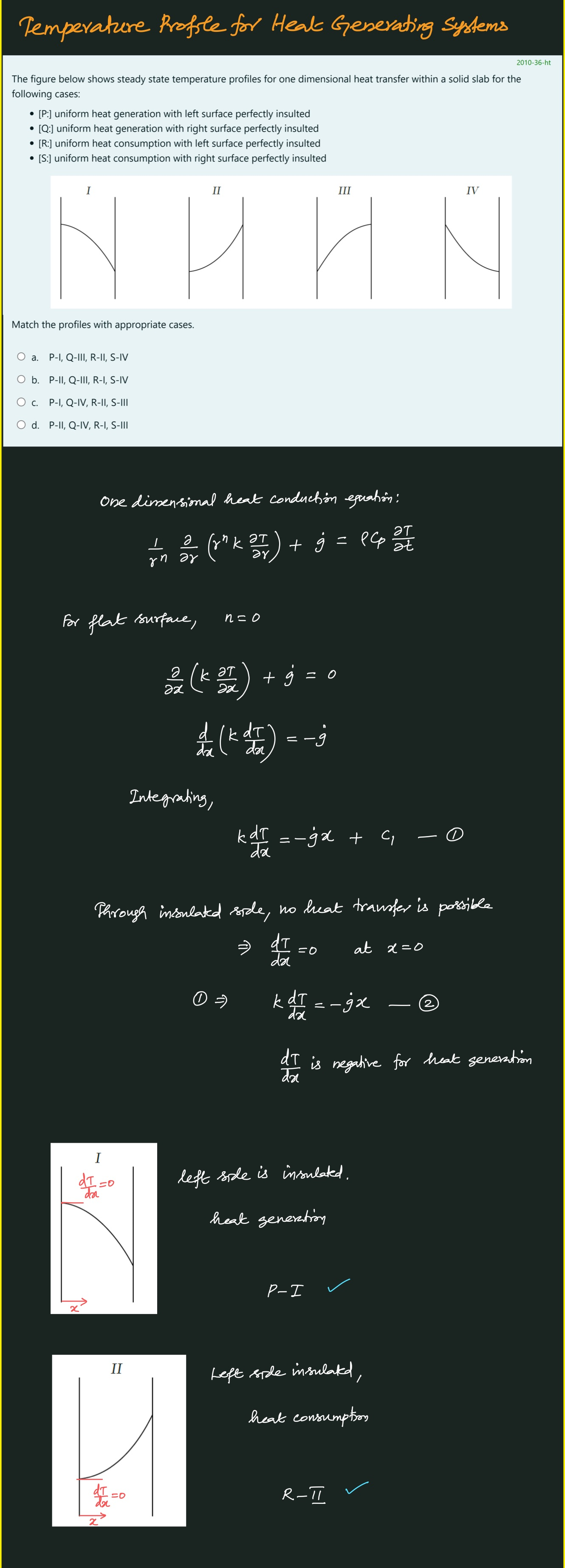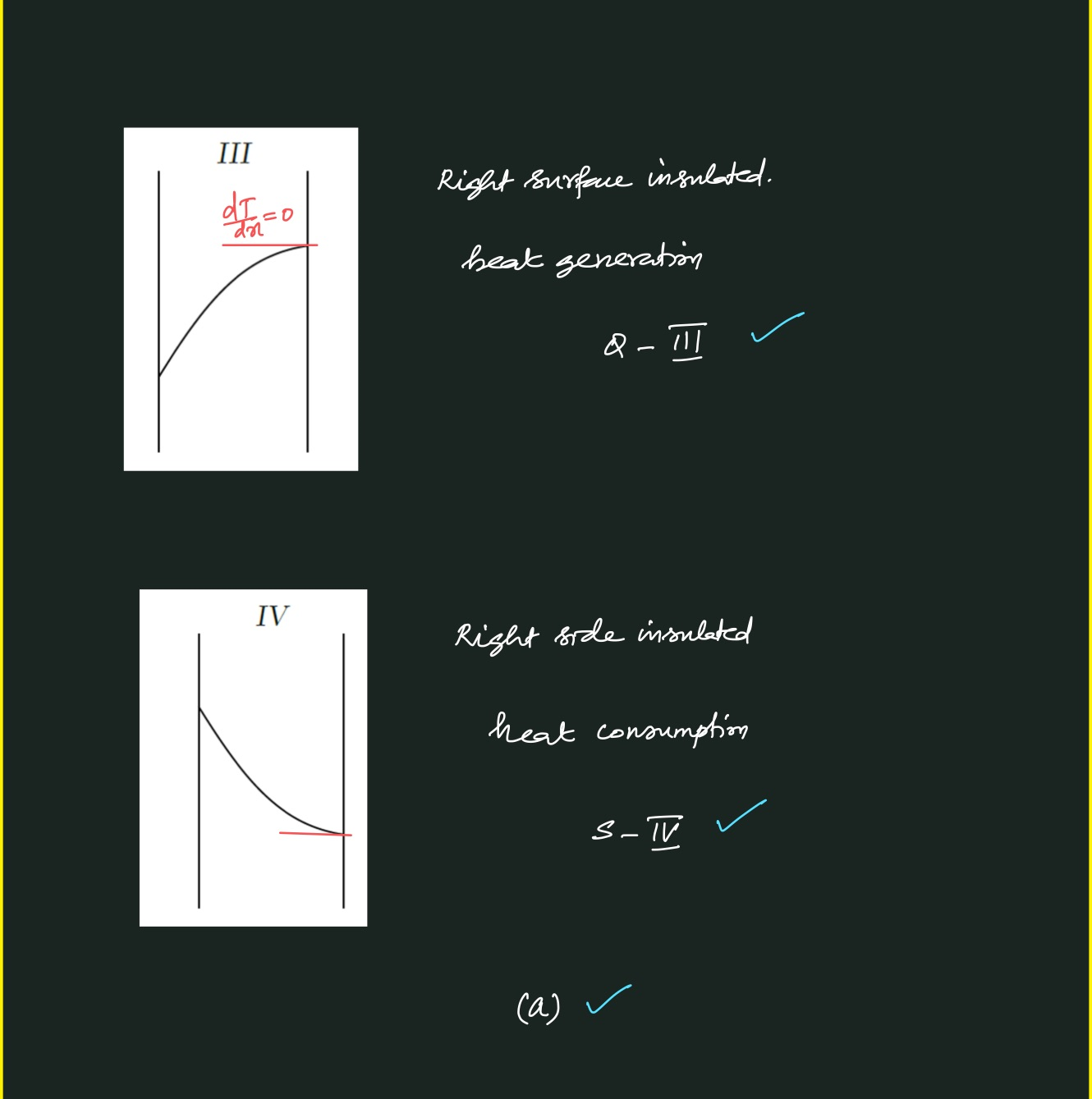Refresher Class - Heat Transfer
| Site: | MSubbu Academy |
| Course: | GATE Chemical Engineering - Fast Track Classes |
| Book: | Refresher Class - Heat Transfer |
| Printed by: | Guest user |
| Date: | Wednesday, 5 February 2025, 8:31 PM |
Description
17-Jan-2025, 7 to 8 pm
Table of contents
- 1. Video
- 2. Conduction
- 2.1. One Dimensional Heat Conduction Equation
- 2.2. Heat Conduction Equation at Steady State
- 2.3. Three-dimensional Heat Conduction Equation
- 2.4. Heat Transfer through Two Flat Plates - Comparison
- 2.5. Thermal Conductivity and Temperature Gradient
- 2.6. Heat Transfer through Flat Surface
- 2.7. Heat Transfer through Composite Wall
- 2.8. Heat Transfer through Cylindrical Wall
- 2.9. Heat Transfer through Series-Parallel Resistances
- 2.10. Temperature Profile for Flat Surface with Variable Conductivity
- 2.11. Temperature Profile for Heat Generating Systems
- 2.12. Time Required for Cooling vs Shape of Objects
- 2.13. Biot Number and Temperature Profile
- 3. Convection
- 3.1. Forced Convection - Dimensionless Numbers
- 3.2. Nusselt Number and Biot Number
- 3.3. Prandtl Number - Significance
- 3.4. Thickness of Thermal and Hydrodynamic Boundary Layers
- 3.5. Hydrodynamic and Thermal Entry Lengths
- 3.6. Heat Transfer Coefficient - Turbulent Flow
- 3.7. Heat Transfer Coefficient vs Diameter - Forced Convection
- 3.8. Colburn Factor
- 4. Boiling
- 5. Condensation
- 6. Evaporation
- 7. Heat Exchangers
- 8. Radiation
1. Video
2. Conduction
Questions from Conduction
2.1. One Dimensional Heat Conduction Equation

2.2. Heat Conduction Equation at Steady State

2.3. Three-dimensional Heat Conduction Equation

2.4. Heat Transfer through Two Flat Plates - Comparison

2.5. Thermal Conductivity and Temperature Gradient

2.6. Heat Transfer through Flat Surface

2.7. Heat Transfer through Composite Wall

2.8. Heat Transfer through Cylindrical Wall

2.9. Heat Transfer through Series-Parallel Resistances

2.10. Temperature Profile for Flat Surface with Variable Conductivity

2.11. Temperature Profile for Heat Generating Systems


2.12. Time Required for Cooling vs Shape of Objects

2.13. Biot Number and Temperature Profile

3. Convection
Questions from Convection
3.1. Forced Convection - Dimensionless Numbers

3.2. Nusselt Number and Biot Number

3.3. Prandtl Number - Significance

3.4. Thickness of Thermal and Hydrodynamic Boundary Layers

3.5. Hydrodynamic and Thermal Entry Lengths

3.6. Heat Transfer Coefficient - Turbulent Flow

3.7. Heat Transfer Coefficient vs Diameter - Forced Convection

3.8. Colburn Factor

4. Boiling
Questions from Boiling
4.1. Pool Boiling - Operating Point

4.2. Dimensionless Numbers

4.3. Effect of Roughness on Boiling

5. Condensation
Questions from Condensation
5.1. Film Condensation - Local Heat Transfer Coefficient

5.2. Variation of Heat Transfer Coefficient

5.3. Local and Average Heat Transfer Coefficients

5.4. Effect of Temperature Difference on Condensation

5.5. Film-wise and Drop-wise Condensation

6. Evaporation
Questions from Evaporation
6.1. Economy of Evaporator

6.2. Multiple Effect Evaporation - Advantages

6.3. Comparison between Backward and Forward Feed Evaporations

7. Heat Exchangers
Questions from Heat Exchangers
7.1. Overall Heat Transfer Coefficient

7.2. LMTD between Stirred Tank and Coil Fluid

7.3. Temperature Profiles for Heat Exchange Processes

7.4. Effectiveness of Heat Exchanger

7.5. NTU of Countercurrent Heat Exchanger

8. Radiation
Questions from Radiation
8.1. Heat Transfer - Medium

8.2. Radiative Properties of Materials

8.3. Ideal Black Body

8.4. View Factor of Hemispherical Sphere

8.5. Surface Temperature for the given Radiative Flux

8.6. Radiative Heat Transfer Coefficient
